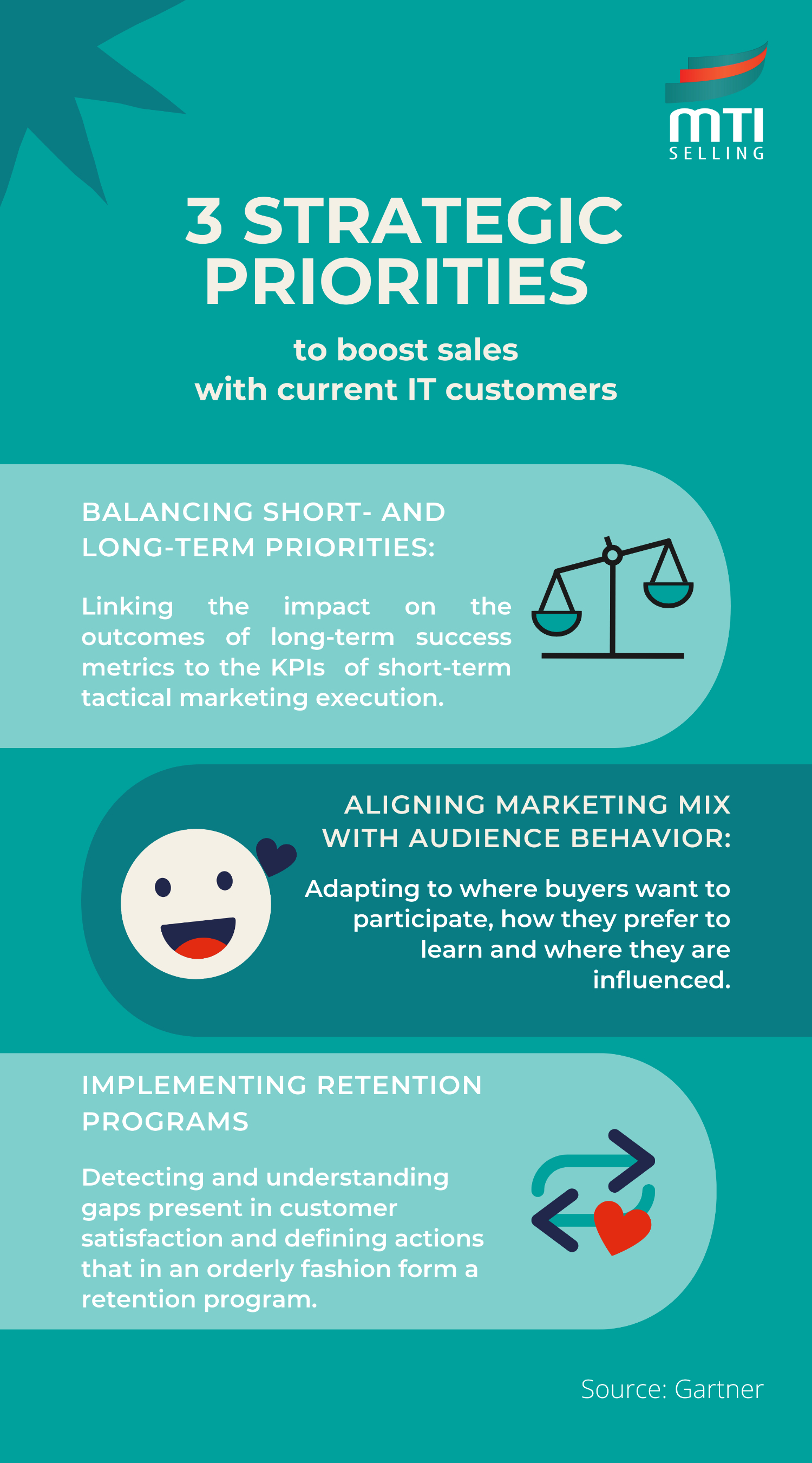Are you making use of the full potential of opportunities with your current customers?
MTI Selling

In a recent article, we reviewed how relevant the B2B user experience is, as well as in businesses selling to other businesses. There are several reasons why we should not lose sight of it, as it will impact customer retention.
The relevance of data retention
According to Harvard Business Review, acquiring a new customer costs 5 to 25 times more than retention (HBR)
This makes sense if we understand that instead of drawing up plans where most of the time and resources are spent looking for new customers, effort is also strongly aimed at keeping current customers.
Increasing customer retention rates by 5% increases profits by 25% to 95%. (Frederick Reichheld from Bain & Company - creator of the Net Promoter Score or NPS).
In addition, according to a Gartner’s publication, retaining and growing demand from current customers is a superior way of making use of Account Based Marketing, and this practice is increasing.
How can we be efficient in this regard?
A) By understanding that demand is generated with both newly-acquired and current customers (good practices that work for me)
Project retention: When preparing your Business Plan, focus on customer acquisition, but do not neglect retention. When planning the pipeline, I recommend giving relevance to projecting recurring sales as well as up/cross selling. The outcomes may surprise you!
Do strategic research: Study your customers, know their behavior throughout the entire buying journey, measure their NPS as well as their lifecycle value. Analyze trends that help you predict opportunities as well as be aware of which customers are strategic.
Have custom instances: Listen to your current customers, let them know that you think about them and that you care about their success, delighting them with exclusive benefits.
B) By planning with the top 3 strategic priorities for IT in mind (based on Gartner’s study)
Balancing short- and long-term priorities: It is important to be able to balance short- and medium-term priorities. To do so, we must link the impact on the outcomes of the long-term success metrics to the KPIs of short-term tactical and operational marketing execution.
Aligning Marketing Mix with Audience Behavior: According to “Relevance and keys to effective content” we must give importance to the content in our plan, always within the framework of a comprehensive digital strategy.
This means adapting to where buyers want to participate, how they prefer to learn, where they are influenced and what channels they will use to inform buying decisions.
Implementing retention programs: It is critical to be aligned with the Customer Success team and review customer feedback to have a grasp of satisfaction gaps. From there, you can establish actions that, implemented in an orderly fashion, form a true retention program.

These strategic priorities in your business plan will drive your outcomes in ways you don’t imagine.
Did you find this article helpful? Share it with someone who may find it interesting!
If you want to know how in MTI Selling we can support you with our strategies of demand generation and positioning with tailored digital selling, I invite you to watch this video and follow us on YouTube and LinkedIn.



